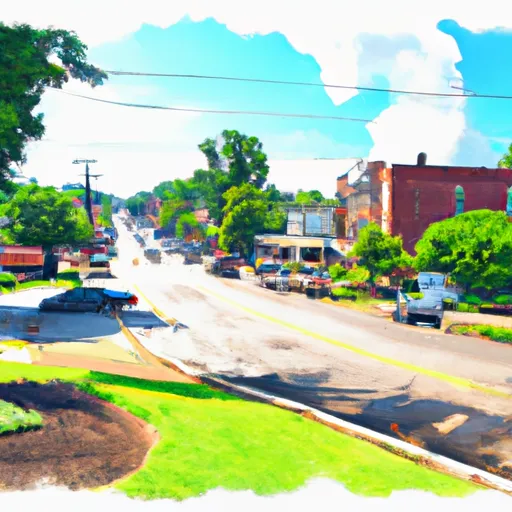-
 Snoflo Premium
Snoflo Premium
Get unlimited access to all our content
With no Ad interruptions! - Start Your Free Trial Login with existing account
Maud
Eden Index
Climate
8.1
•
Recreation
2.2
•
Community
2.9
•
Safeguard
4.7/10

Maud, Kentucky is a small town located in the northeastern part of the state. The climate in Maud is characterized by mild to hot summers and cool to cold winters. Average high temperatures range from the high 80s Fahrenheit in summer to the low 40s in winter, while average lows range from the upper 60s to the mid-20s.
Hydrologically, Maud is situated near the Licking River, which plays a significant role in the area's water resources and ecology. The river supports diverse wildlife and offers opportunities for fishing, boating, and kayaking. Additionally, Maud is surrounded by picturesque lakes and ponds that provide further recreational outlets for water enthusiasts.
Outdoor recreation in Maud extends beyond water activities, with plenty of opportunities for hiking, camping, and exploring the natural beauty of the surrounding landscapes. The region boasts several parks and trails, offering visitors the chance to immerse themselves in nature and enjoy activities such as picnicking, bird-watching, and wildlife spotting.
Overall, Maud, Kentucky offers a pleasant climate, access to various water resources, and a range of outdoor recreation opportunities that cater to nature enthusiasts and adventure seekers alike.
What is the Eden Index?
The Snoflo Eden Index serves as a comprehensive rating system for regions, evaluating their desirability through a holistic assessment of climate health, outdoor recreation opportunities, and natural disaster risk, acknowledging the profound impact of these factors on livability and well-being.
Climate Health Indicator (CHI): 8.1
Maud receives approximately
1219mm of rain per year,
with humidity levels near 82%
and air temperatures averaging around
14°C.
Maud has a plant hardyness factor of
6, meaning
plants and agriculture in this region thrive during a short period during spring and early summer. Most
plants will die off during the colder winter months.
By considering the ideal temperature range, reliable water supplies, clean air, and stable seasonal rain or snowpacks, the Climate Health Indicator (CHI) underscores the significance of a healthy climate as the foundation for quality living.
A healthy climate is paramount for ensuring a high quality of life and livability in a region, fostering both physical well-being and environmental harmony. This can be characterized by ideal temperatures, reliable access to water supplies, clean air, and consistent seasonal rain or snowpacks.
Weather Forecast
Streamflow Conditions
Lower Ohio-Salt
Area Rivers
Lower Ohio-Salt
Snowpack Depths
Lower Ohio-Salt
Reservoir Storage Capacity
Lower Ohio-Salt
Groundwater Levels
Recreational Opportunity Index (ROI): 2.2
The Recreational Opportunity Index (ROI) recognizes the value of outdoor recreational options, such as parks, hiking trails, camping sites, and fishing spots, while acknowledging that climate plays a pivotal role in ensuring the comfort and consistency of these experiences.
Access to outdoor recreational opportunities, encompassing activities such as parks, hiking, camping, and fishing, is crucial for overall well-being, and the climate plays a pivotal role in enabling and enhancing these experiences, ensuring that individuals can engage in nature-based activities comfortably and consistently.
Camping Areas
| Campground | Campsites | Reservations | Toilets | Showers | Elevation |
|---|---|---|---|---|---|
| Sale Creek - Chickamauga Lake | 50 | 707 ft | |||
| Lillydale - Dale Hollow Lake | 114 | 653 ft | |||
| Skull Island - Chickamauga Lake | None | 717 ft | |||
| Obey River - Dale Hollow Lake | 131 | 658 ft | |||
| Standing Stone State Rustic Park | 36 | 986 ft | |||
| Dale Hollow State Park | 145 | 1,037 ft | |||
| Harrison Bay State Park | 149 | 721 ft | |||
| Willow Grove - Dale Hollow Lake | 83 | 697 ft | |||
| Chester Frost Park | None | 750 ft | |||
| Possum Creek RV - Chickamauga Lake | None | 774 ft |
Nearby Ski Areas
Catastrophe Safeguard Index (CSI):
The Catastrophe Safeguard Index (CSI) recognizes that natural disaster risk, encompassing floods, fires, hurricanes, and tornadoes, can drastically affect safety and the overall appeal of an area.
The level of natural disaster risk in a region significantly affects safety and the overall livability, with climate change amplifying these risks by potentially increasing the frequency and intensity of events like floods, fires, hurricanes, and tornadoes, thereby posing substantial challenges to community resilience and well-being.
Community Resilience Indicator (CRI): 2.9
The Community Resilience Indicator (CRI) recognizes that education, healthcare, and socioeconomics are crucial to the well-being of a region. The CRI acknowledges the profound impact of these elements on residents' overall quality of life. By evaluating educational resources, healthcare accessibility, and economic inclusivity, the index captures the essential aspects that contribute to a thriving community, fostering resident satisfaction, equity, and social cohesion.

